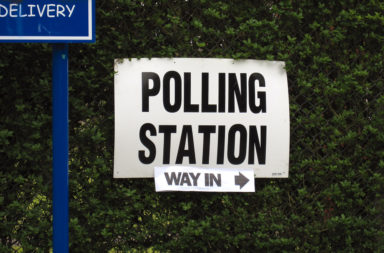Trump and congressional Republicans are now pursuing tax reform, having moved on from the failure to reinvent healthcare. They are starting with reducing corporation tax, followed by bringing down personal income tax later.
- Taxes would drop at all income levels in 2017, but most savings would go to the highest-income households.
- Federal revenues would fall by $3.1 trillion over the first decade before accounting for added interest costs and macroeconomic effects.
- Federal debt would rise by at least $3.0 trillion over the first decade and by least $6.6 trillion over the second ten years
They think this will be easier. Trump’s first major legislative goal was to famously “repeal and replace” Obamacare – this effort has ironically imploded far more severely than Trump warned Obamacare itself would, thanks to Trump and his fellow Republicans’ utter naivety over the complex nature of healthcare reform.
Of course, it was hard to imagine a successful attempt to replace a popular law with a poorly modified version of the same system, but one that would take more than 24 million Americans away from basic healthcare – especially with the 2018 midterms ahead.
What exactly are they proposing?
Republican’s initial proposition are likely to add trillions of dollars to budget deficits and divert more than 99% of the tax reform benefits to the 1%.
The plan is to significantly reduce marginal tax rates, increase standard deduction amounts, repeal personal exemptions and most itemised deductions, allow businesses to expense new investment, and not allow businesses to deduct net interest expenses.
Republicans in the House initially suggested a corporation tax cut from 35% to 15%, with lost revenues made up from a border adjustment tax – i.e. a tax on all imports. This would be dead on arrival, it doesn’t have enough support even from within the Republican Party and it would violate World Trade Organisation rules.
These tax cuts would create a $2 trillion revenue shortfall over the next decade, without any respite coming from healthcare reform savings or the border adjustment tax.
The realistic options ahead
Republican’s much choose one of two forks in the road – do they want to pass their massive tax cuts and add phenomenal amounts to the public debt, or will they significantly tone down their expectations.
The first fork in the road is a treacherous path for three reasons. Firstly, it will mean a reckless increase in public debt, which conservative Republicans will object to outright. Secondly, if a tax cut is not fully financed by other revenues or spending cuts, congressional budget rules mean the laws will expire within 10 years.
Finally, with tax cuts and increased military expenditure pushing up the deficit and public debt, interest rates would have to rise. This would slow interest-centric spending like housing and would in turn cause a surge in the US dollar, which would hit Trump’s main constituency of working class voters the hardest.
Furthermore, if Republicans do decide to dramatically increase the debt in this way, the market’s response could crash the US economy – so because of this, all tax cuts would have to be financed by increased revenues; a highly unlikely scenario on any large scale, ultimately deeming the tax reform plans much more modest than initially thought.
Spicer mentioned GOP failure to repeal healthcare failed to free up $ (stolen from Medicaid) to do tax "reform". GOP not even pretending.
.— Kat Capps ❄️ (@KatCapps) April 11, 2017
Where could the revenue come from?
Reducing corporation tax just 5%, down to 30%, would be difficult. To do this, Republicans would have to broaden the tax base by forcing entire sectors to pay more, including pharmaceuticals and technology who currently pay very little. They would have to impose a tax on foreign profits – which currently doesn’t exist, allowing trillions of dollars in profits to go untaxed unless they are repatriated.
A one-time 10% repatriation tax “holiday”, proposed by Trump on the campaign trail, would only deliver up to $200 billion in new revenues, much less than the trillions of dollars needed.
The border adjustment tax, which is likely to be a non-starter, could be replaced by a value added tax – legal under WTO rules. But Republicans have been vehemently opposed to such a measure, there is even an anti-VAT Republican caucus in Congress.
Initial income tax reform proposals put forward by Trump and the Republican leadership would cost $5tn to $9tn over the next decade, and 75% of the benefits would have gone to the top 1% – a move that would equate to political suicide, you’d think.
After GOP failed to deliver tax cuts for the rich under #TrumpCare, what's their #taxreform strategy? You guessed it! Tax cuts for the rich.
— Senator Jeff Merkley (@SenJeffMerkley) April 11, 2017
Their next go at it produced a revenue-neutral tax cut that would include no reductions for the top 1%, which is also likely to be impossible. To do this, Republicans would have to phase out many exemptions and broaden the tax base in ways that are politically untenable. For example, if Republicans eliminated the mortgage-interest deduction for homeowners, the US housing market would crash.
The only way to sensibly provide tax relief to the middle and working class is to raise taxes on the rich. But of course this socially progressive policy is something that Trump will never accept. Therefore, in the meanwhile, Republicans will continue to spin, deluding themselves that supply-side trickle down economics will work – despite the staggering evidence that show us otherwise.
If you’re trying to figure out how serious the Administration is about tax reform, this might help. (HT @kevinmilligan) pic.twitter.com/p08H0sM7dk
— Justin Wolfers (@JustinWolfers) April 11, 2017
My colleague @RepJeffries wants to see @POTUS tax returns before we begin #TaxReform. I agree.#CongressCanRequesthttps://t.co/TuIK9pAUxg pic.twitter.com/lKp0tl0wV8
— Bill Pascrell, Jr. (@BillPascrell) April 4, 2017




